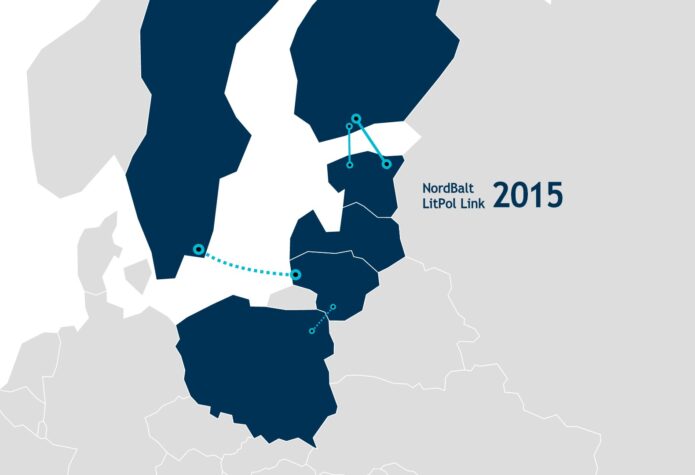Litgrid: Baltic energy ring is now complete

At the end of 2015, the Lithuanian electricity transmission system operator Litgrid launched two major power links: LitPol—the first ever on-land power link connecting the Baltic countries to the EU electricity grid, co-financed by NIB—and NordBalt, an electricity cable across the Baltic Sea to Sweden.
For Litgrid, to implement both large-scale projects at the same time required a great effort. The two links now complete the electricity ring of the Baltic region. The first two interconnections breaking the Baltic countries’ energy isolation from the rest of Europe, Estlink 1 and 2 between Estonia and Finland, were built in in 2006 and 2014.
“The Baltic energy ring is finally complete. Over the past five years, we’ve gained invaluable experience while simultaneously implementing two strategic, high-technology projects—the first of their kind in the Lithuanian grid. Together with our neighbours, we are creating a single and sustainable energy market in the EU”, says Daivis Virbickas, CEO of Litgrid.
LitPol Link is a 400 kV overhead power line between Lithuania and Poland with a capacity of 500 MW. The line stretches for 163 kilometres through the municipalities of Alytus and Lazdijai in Lithuania, and Podlachia, Warmia and Masuria in Poland.
“To make sure the power links are suitable for decades of flawless service, we are testing them in different regimes, including extreme conditions”, Mr Virbickas explains.
The service life of LitPol Link is 50 years and that of NordBalt 30 years. When at full capacity, LitPol Link alone can cover one third of Lithuania’s electricity demand, even in winter. The capacity of the 400-kilometre, coast-to-coast NordBalt is even larger—700 MW.
“Starting from the beginning of the trial operations in December 2015, the new source of import has been available on the market for all three Baltic countries”, says Mr Virbickas.
Investments on the Lithuanian side of LitPol Link totalled EUR 150 million. NIB has provided a EUR 50 million loan for the project.
“NIB’s long-term financing was one of the key factors ensuring the timely implementation of the project. Litgrid has been cooperating with NIB since 2013, and we value its strict criteria for selecting projects. NIB’s loan can be seen as acknowledgment of our project’s importance for the region”, says the head of Litgrid.
The launch of both interconnections is happening a year after Lithuania set in operation the Baltic region’s first, and so far only, liquefied gas terminal “Independence” in the port of Klaipeda (click here to read more).
“Today we can say that 2015 was a breakthrough year for Lithuania toward its energy independence, both when it comes to gas supply and now also electrical power”, says Romas Švedas, once Lithuania’s vice-minister of energy and now a university lecturer in Vilnius.
After the decommissioning of Lithuania’s Ignalina nuclear power plant, the country has been importing 70% of its electricity, mostly from Russia. Mr Švedas believes that energy security has a direct impact on economic and national security.
“These projects play a crucial role in creating alternative energy supply routes, coping with the vertically integrated monopoly of Russia’s Gazprom and thus getting Lithuania out of its ‘energy island’.”
“Lithuania’s dependence on external energy supplies is the highest in the EU. Diversifying energy supply, creating alternative energy sources is the best Lithuania can do to decrease the dependence on a single supplier. Together with the two other Baltic countries, Lithuania has been taking steps towards diversification in the framework of the Baltic Energy Market Interconnection Plan”, says Mr Švedas.
“The Estlink, NordBalt and LitPol interconnection projects will ensure EU-bound transmission capacity on the same scope we have now it with the East.”
Now all three Baltic countries have full access to the NordPool Spot power exchange of the Nordic countries. According to the energy expert, opening up to a larger energy market within the EU will largely solve the inherent systemic problem of Baltic dependence on a single source of power supply.

